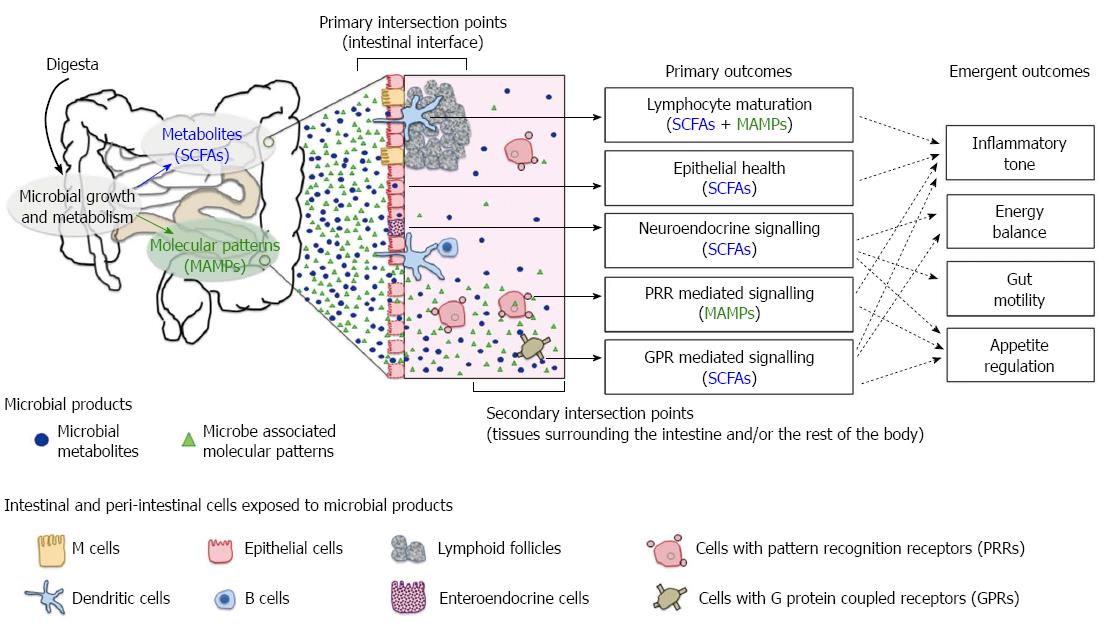Copyright
©2014 Baishideng Publishing Group Inc.
World J Gastroenterol. Nov 28, 2014; 20(44): 16498-16517
Published online Nov 28, 2014. doi: 10.3748/wjg.v20.i44.16498
Published online Nov 28, 2014. doi: 10.3748/wjg.v20.i44.16498
Figure 1 Axes of host-microbial interaction that influence health.
Short chain fatty acids (SCFAs) and microbe-associated molecular patterns (MAMPs) are the key microbial signals detected by the host. Outcomes of host-microbiome interactions are contingent on the microbial product involved, the type of host cells exposed to microbial signals and the location of contact. The primary intersection points occur at the intestinal epithelial interface. Sampling of luminal MAMPs and uptake of SCFAs have a direct impact on gut epithelium, lymphoid and neuroendocrine systems. The secondary intersection points occur externally to the intestinal tissues. Translocated or “escaped” microbial products can activate pattern recognition receptors (PRRs) and specific G protein coupled receptors (GPRs) on a wide range of host cells beyond the epithelium. A compromised gut barrier amplifies host-microbiome interactions in the secondary intersection points and the downstream effects of PRR and GPR signalling cascades. Host outcome is an emergent property of all axes of interactions.
- Citation: Ha CW, Lam YY, Holmes AJ. Mechanistic links between gut microbial community dynamics, microbial functions and metabolic health. World J Gastroenterol 2014; 20(44): 16498-16517
- URL: https://www.wjgnet.com/1007-9327/full/v20/i44/16498.htm
- DOI: https://dx.doi.org/10.3748/wjg.v20.i44.16498









